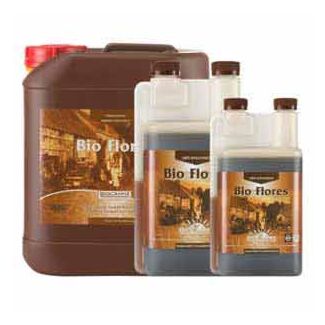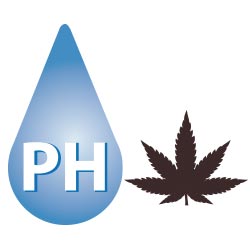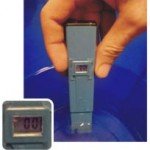Autoflowering Marijuana Varieties (or Automatic), combining Ruderalis genetics with Indica or Sativa, offer short growth and rapid flowering.
Ideal for growers of all levels due to their ease of cultivation both indoors and outdoors. Understanding how they work is key to maximizing their potential.
Table of Contents
- Introduction to Flowering in Autoflowering (or Automatic) Varieties
- Advanced Techniques to Stimulate Flowering of Autoflowering Marijuana (Automatic Seeds)
- Fertilizers, Nutrients, and Key Factors to Increase Autoflowering Marijuana Flowering
- Common Mistakes and How to Avoid Them to Increase Autoflowering Marijuana Production
- How to Use Fertilizers, Stimulants, and Bacteria in Autoflowering Marijuana Flowering
- Autoflowering Varieties and Recommended Products to Maximize Production
- Frequently Asked Questions to Stimulate Flowering of Autoflowering Cannabis (or Automatic)
Introduction to Flowering in Autoflowering (or Automatic) Varieties
Although autoflowering seeds have gained a market share, as they are easy to cultivate (both indoors and outdoors), all cannabis varieties crossed with rudelaris will appreciate the addition of fertilizers to their irrigation water. By offering our autoflowering varieties the full potential of available fertilizers, stimulants, and bacteria, we can double the production in each harvest.
If we have followed the tutorial, step by step for the growth of autoflowers, and the plants begin to show signs of flowering, it is time to apply all our effort to maximize our harvests. Even though these are easy-to-grow genetics, there are techniques and products that can be of great help to get the most out of automatic varieties.
Before discussing techniques and available products, it is important to understand how autoflowering genetics work. As we mentioned in previous articles, rudelaris varieties are much more susceptible to the volume of the container, the substrate used, the average temperature of the crop, and even the fertilizers used.
Advanced Techniques to Stimulate Flowering of Autoflowering Marijuana (Automatic Seeds)
The flowering of cannabis rudelaris is very similar in nutrient demand to that of cannabis indica or cannabis sativa.
Autoflowering plants do not require different nutrients than other cannabis subspecies, they simply do not require such high quantities of nutrients.
This is explained by their short life cycle and contained size (much smaller and accordingly less demanding).
During the flowering of autoflowering marijuana seeds, plants will primarily need macronutrients such as:
- Phosphorus (P),
- Potassium (K)
- and Nitrogen (N)
- as well as others like Calcium (Ca) and
- Magnesium (Mg).
During the flowering phase, plants consume N-P-K values (higher in Phosphorus and Potassium and lower in Nitrogen) to feed the flowers.
If we want abundant flowering, we should add to the irrigation water fertilizers that increase the assimilable amounts of these nutrients, without neglecting the also important nitrogen.
Important: We say assimilable because an excess of fertilizer available to the plants can generate the opposite effect to what is sought.
Specific Lighting Adjustments:
Maintaining prolonged light cycles, ideally about 20 hours a day, favors the development of autoflowering plants.
Environmental Control:
Optimal temperatures are between 20-26°C with a relative humidity of 40-50% during flowering. It is crucial for proper development.
Watering Strategies:
Moderate watering, without excesses or deficiencies, is essential. Water needs vary in the different phases of flowering.
Fertilizers, Nutrients, and Key Factors to Increase Autoflowering Marijuana Flowering
During flowering, the proper contribution of phosphorus, potassium, and nitrogen is crucial. Using specific fertilizers for flowering balances these macronutrients. Calcium and magnesium are also important.
There are three main factors that can help increase the production of autoflowering marijuana seeds (beyond climate or variety):
 As we have mentioned, during the flowering phase, plants will need fertilizers rich in phosphorus and potassium (and also containing nitrogen in small amounts). The fertilizer will be responsible for providing the plant with all the necessary resources to fill the flowers.
As we have mentioned, during the flowering phase, plants will need fertilizers rich in phosphorus and potassium (and also containing nitrogen in small amounts). The fertilizer will be responsible for providing the plant with all the necessary resources to fill the flowers.
 Flowering stimulants for marijuana refer to those products that enhance processes in the plant (in this case, flowering), generating greater tendencies for increased flowering. Flowering stimulants induce plants to produce more flowers (which the use of flowering fertilizers will fill) and do not represent an increase in nutrients for the plants. Stimulants act by encouraging processes in the plant that result in improvements in flowering.
Flowering stimulants for marijuana refer to those products that enhance processes in the plant (in this case, flowering), generating greater tendencies for increased flowering. Flowering stimulants induce plants to produce more flowers (which the use of flowering fertilizers will fill) and do not represent an increase in nutrients for the plants. Stimulants act by encouraging processes in the plant that result in improvements in flowering.
Flowering stimulants do not directly increase nutrients, but rather encourage natural processes in the plant for greater flower production. Organic additives improve taste and aroma.
 The activity of beneficial fungi and bacteria in the substrate improves nutrient absorption by the roots. Their presence can increase this capacity by up to 700%.
The activity of beneficial fungi and bacteria in the substrate improves nutrient absorption by the roots. Their presence can increase this capacity by up to 700%.
The activity of beneficial fungi and bacteria in the substrate is very important.
A living substrate proves more productive and more capable of withstanding pest attacks.
Just as during growth, the use of fungi and bacteria during the flowering phase helps improve the yields of each harvest.
Increasing the bacterial activity of the soil means an improvement for the roots of the plants (responsible for assimilating all the nutrients) and can increase the root absorption capacity by up to 700%.
If the root is able to absorb more (because the plant assimilates it), the improvement in results is assured.
Common Mistakes and How to Avoid Them to Increase Autoflowering Marijuana Production
- Over-fertilization:
Identifying and correcting over-fertilization is vital. Too many nutrients can be counterproductive.
- Plant Stress:
Avoiding stress from transplants, adverse environmental conditions, or pests is crucial for the healthy development of autoflowers.
- Adjustment and Monitoring of the Light Cycle:
Although they do not depend on the light cycle to flower, maintaining a constant and appropriate cycle is important for their optimal development.
By combining the above-described (to improve the growth of autoflowering marijuana) with fertilizers and stimulants for flowering, and a high bacterial life, we will achieve the maximum from the automatic varieties.
The main thing in any cultivation is to provide the plant with everything it might need without generating excesses or deficiencies, which would reduce production.
The Process for Dosing Nutrients and Stimulants is Simple:
Fertilizers and stimulants must be adjusted to the current stage of the cycle.
Those plants that are beginning to flower need less additives than those in the middle of the process, and in turn, these will need less than the same in their final stage of flowering (just before root washing).
To explain this, we will take as a reference an autoflowering variety that is harvested 8-10 weeks after germination. In this hypothetical automatic variety, we would divide the time into 5 phases:
1. Initial Phase of Flowering:

From the appearance of the first pistils until 7-10 days later where we already visualize what will be the buds.
2. Mid-Flowering Phase:

The formation of buds progresses throughout the plant and they start to fatten. Appearance of the first resin. (Duration: 10-15 days)
3. Advanced Flowering Phase:

The buds are formed and continue to define what will be the final buds. The resin spreads along leaves and buds (Duration: 10-15 days)
4. Final Phase of Flowering:

The shape of the buds is fully defined and the plant proceeds to the fructification of the flowers. The final phase of maturation begins (10 days)
5. Root Washing:
Once the plant shows 60%-70% of its pistils brown, it is time to start the root washing before the cut. The washing will extend for a minimum of 10-15 natural days during which the plant will continue its maturation while we rid ourselves of nutrients to improve the final taste of the dry fruit.
How to Use Fertilizers, Stimulants, and Bacteria in Autoflowering Marijuana Flowering
There are so many cannabis fertilizer producers on the market that this article would fall short to explain each one separately.
Aware of this problem, from Sant Yerbasi, we have synthesized our explanation by types of products to use (understanding that manufacturers offer similar solutions for the same purpose).
Therefore, we will describe:
- how to apply a fertilizer (which we will call FERTILIZER A and according to the manufacturer its dose is 5ml/l),
- a stimulant (which we will call STIMULANT A and according to the manufacturer its dose is 5ml/l)
- and fungi and bacteria (which we will call SOIL LIFE A and according to the manufacturer its dose is 1g/l).
Consequently, we encourage consulting fertilizers for flowering marijuana, stimulants for cannabis flowering as well as additives for substrates available. There are fertilizers and stimulants of both organic and mineral origin.

Autoflowering Varieties and Recommended Products to Maximize Production
Recommended Autoflowering Seeds
Recommended Fertilizers for Autoflowering Flowering
Recommended Fungi and Bacteria for Autoflowering Flowering
Stimulating flowering in autoflowering marijuana requires an integrated approach that includes selecting the right genetics, using specific fertilizers and stimulants, and applying advanced cultivation techniques. By following these recommendations, growers can maximize both the quality and quantity of their harvest.
Frequently Asked Questions to Stimulate the Flowering of Autoflowering Cannabis (or Automatic)
1 - Why is my autoflower not flowering?
If your autoflowering plants have not started to flower and you believe they should have, the following might be happening:
- Their vegetative period is longer than you thought and they still need a few days to start flowering (most common option).
- The average temperature is very low. Some varieties may struggle to flower in very low temperatures (or may not flower at all). This can happen in winter crops if the area you live in is very cold, with maximum temperatures below 10°C.
- Stress conditions: Autoflowers are very susceptible to stress, which can come in many forms. Stress may be due to a transplant, prolonged excess or lack of watering, a strong pest infestation, nutritional deficiencies, etc.
- Insufficient hours of light: Autoflowering varieties can flower in very limited conditions of 4 hours of sun (and sometimes even less). If your location does not receive enough hours of sun (direct or indirect), your autoflowering plant may not flower.
- Your seeds are not autoflowering: If the seeds you bought are not from a reputable seed bank, or did not come in the original packaging, there might have been a mix-up in the seed packaging process and you might have received non-autoflowering seeds (very rare if you bought them, but common if the seeds had an unclear origin).
As you can read, the reasons why an autoflowering plant might not flower are varied. Even so, we want to emphasize that in most cases, it is simply a matter of time (and the grower's eagerness) for your auto plants to start flowering.
*Sant Yerbasi recommends the use of organic fertilizers for self-cultivation.
2 - How does the light spectrum affect the development of buds in autoflowers?
The appropriate light spectrum stimulates the growth and development of buds, helping the plant to expand and produce more.
3 - Are fertilizers necessary in autoflowers?
While they can grow without them, for abundant and healthy flowering, the use of specific fertilizers is recommended.
4 - What benefits do fungi and bacteria bring to the cultivation of autoflowers?
They improve nutrient absorption and increase plant resistance to pests and diseases.
5 - How long does it take for autoflowers to flower?
It depends on the variety, but they generally start flowering between 3 and 4 weeks after germination.
6 - How can I tell if my autoflowers are flowering correctly?
You will observe the appearance of white pistils and the development of buds at the nodes.
7 - Is it necessary to change the light cycle for autoflowers?
No, autoflowers do not depend on the light cycle to flower, but a schedule of 18/6 or 20/4 is generally recommended for optimal growth.
8 - How to accelerate the flowering of autoflowers?
To accelerate flowering, make sure to provide sufficient light and specific nutrients for the flowering phase. Some growers also use flowering stimulators.
9 - How to force flowering?
In autoflowers, it is not necessary to force flowering, as they flower automatically. If they do not, it could be a genetic or cultivation problem.
10 - When does autoflowering marijuana flower?
Generally, autoflowers start flowering between 4 and 6 weeks after germination, depending on the variety.
11 - How to water an autoflower?
Water when the substrate is dry to the touch, avoiding waterlogging. The frequency of watering will depend on the size of the plant and environmental conditions.
12 - How long does an automatic plant take to flower?
Flowering can last between 5 and 7 weeks, depending on the variety and growing conditions.
13 - How many hours of direct sunlight does an autoflowering plant need?
Ideally, about 20 hours of light a day for optimal development, although they can grow with less.
14 - When to stop watering autoflowers?
Stop watering a few days before harvest to improve quality and facilitate drying.
15 - When to take autoflowers out in the sun?
You can take them out in the sun once the risk of frost has passed and they are large enough to withstand external conditions.
16 - About plants with drooping leaves:
This could be due to excessive watering or nutritional deficiencies. Check the watering frequency and make sure you are providing the right nutrients.
17 - Use of biological fertilizers and stimulators for larger buds:
It is advisable to use biological fertilizers and stimulators to improve the quality and size of the buds.
18 - Inquiry about pruning autoflowers:
Drastic pruning is generally discouraged in autoflowers due to their sensitivity to stress.
19 - About changing fertilizer during flowering:
Switch to a flowering fertilizer after the first signs of flowering, starting with low doses and gradually increasing.
20 - Use of additional light for outdoor autoflowers:
Additional light can be used at the beginning and end of the life cycle to stimulate growth and flowering.
21 - About the frequency of product application in watering:
It is recommended to apply products in each watering, adjusting the doses according to the plant's needs.
22 - Fertilizing automatic plants:
Fertilization can be done both day and night, although indoors it is better to do it during the day.
23 - Managing plants that show slow growth:
Make sure not to overwater and to provide sufficient light and nutrients. Sometimes, slow growth is simply part of the plant's genetics.
24 - About autoflowering plants that do not flower:
If an autoflowering plant does not flower after an expected period, it could be due to environmental, genetic, or stress factors. Ensure you provide the right conditions and consider consulting with experts or specialized forums.
If you found this article interesting, maybe the following are interesting too:














Thank you for your kind words! ;)
Just keep on those 18/6 til harvest. In futures grows I would use a 20/4 with autos. Yields are a bit higher, but don't do it now. It must be done from the first day to the end.
Best
Using a 2 by 4 by 6 tent with 400 watt less.
Being sincere there isn't any study telling what I will tell you but def. yes there are negative consequences as plants need to rest a bit (at least a couple of hours per day). If you keep a constant photoperiod of 24/0 after a while plants will start showing stress symptoms, and obviously yielding less than expected.
The best compromize between long journeys and few hours rest is 20/4.
Best
Yes, def. agree, I am a totally different person the nights my daughter keep me awake all night long. ;)
I don't think it's caused by your nutrients. If they have been growing for 3 months and still not flowered I bet these are not autoflowering seeds from a trusted seedbank. My advise: prune the tops (try to keep a 4-5 feet plant) and change the photoperiod to 12/12. If in 7-10 days plants start to flower it means I am right and your seeds were not autoflowering.
Best
Regards
i own a mexican airlines auto. now the 49 days old have produced a few small pistils and there are only signs of pre-flowering what would you recommend I do?.. do you think i should wash the soil i suspect nitrogen poisoning.. I bought 12/12 it's been 2 days
We dont´t thing you need wash the soil. You can start to use the bloom fertilizer in a week or ten days. Usually autos needs 16h light/8h night to bloom.
regards
The Auto Gorilla Glue has still not entered flowering mode and here it is September 1st. Im doing LST, 18-6 light cycling, and using fox farm nutrients. I want it to kick into flowering mode before I go on vacation from September 9th-18th. Should I try going dark and if so how long?
FYI someone will be here while I am gone to provide nutrients.
If you will be sure change the light to 12/12h because with your light cycling the plant have to start to flowerig like the Gorilla auto and is possible the seed is not auto and need the normal light cycling to bloom.
Regards